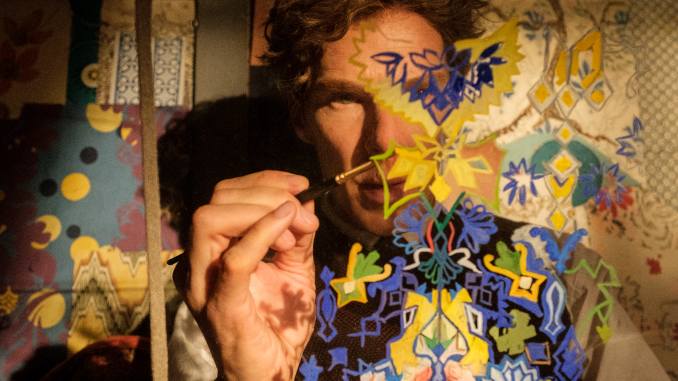The Electrical Life of Louis Wain Is Nearly Electric Biopic Fare

If you look at some of the cat portraits scrawled by Louis Wain, you might think an electrical current was running through them. The fibers of feline hair seem charged by some force that propels the coiled fur, compelling them to dance around just as their anthropomorphic owners do. But The Electrical Life of Louis Wain proposes that Wain—an English illustrator in the late 19th century, who became renowned for his humorous portraits of cats—had more than just an artistic dalliance conjuring electric pencil strokes. As the Victorian era in England reached its autumn years and technology began to power the impending future, the film’s version of Wain is preoccupied with the idea that people were powered by electricity, too. That human beings and creatures with beating hearts harbored charges of unseen energy, which hummed and buzzed outside our realm of conception—even connecting us to past and future.
Directed by Will Sharpe (Sherlock), The Electrical Life of Louis Wain remains a conventional biopic in most ways while attempting to imbue some—ah—electricity, into the tired subgenre. Forgoing the artist’s childhood, the film chronicles Wain (Benedict Cumberbatch) from his years as a young man and part-time illustrator caring for his large family in the wake of his father’s death, to his passionate but doomed marriage to Emily Richardson (Claire Foy) and his later life confined to a psychiatric hospital for schizophrenia (though that diagnosis has been debated in the years following his death). Narrated cheerfully throughout by Olivia Colman, Wain begins the film as something reminiscent of Punch-Drunk Love’s Barry Egan. Eccentric, meek and socially awkward, Wain is overwhelmed by his chaotic household as the sole brother, and now designated breadwinner, of six sisters along with their mother.
When the equally awkward and sweet Richardson arrives to help care for the younger Wain children, Wain’s life is further complicated by his feelings for her. Though a courtship between a gentleman and a lady of servitude was seen as taboo for the time period, Louis and Emily were eventually joined in holy matrimony and lived a happy life together, until Emily’s diagnosis of breast cancer. It was during this time leading up to her death that the couple took in a cat named Peter, an act also perceived as unconventional back when the animals were thought of strictly as disposers of household vermin. The uniting love that the couple shared for Peter served as the catalyst for Wain’s artistic fixation with cats as a way to cope with his grief. And, thus, Wain’s career as a celebrated artist of anthropomorphic cats and champion of domestic, household felines took off; that is, until a failure to copyright his widely reproduced work left him nearly penniless, and his family in debt.
-

-

-

-

-

-

-

-

-

-

-

-

-

-

-

-

-

-

-

-

-

-

-

-

-

-

-

-

-

-

-

-

-

-

-

-

-

-

-

-








































